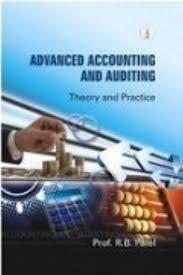Question
Q1. Determine the Millage Rate from the following information: (1.5 Marks) Amount to be collected (a) $ 190,000 Estimated Uncollectible (b) 5% Required Levy ?
Q1. Determine the Millage Rate from the following information: (1.5 Marks)
| Amount to be collected (a) | $ 190,000 |
| Estimated Uncollectible (b) | 5% |
| Required Levy | ? |
| Assessed Property Value | 4,000,000 |
| Less: Property Not Taxable | (300,000) |
| Less: Exemptions | (260,000) |
| Taxable Assessed Value | ? |
| Millage Rate | ? |
Answer:
Q2. A city receives sales taxes of $825,000 from the state during the calendar year 2018. In January 2019, the state advises the city that it will remit, by February 28, 2019, an additional $345,000 for taxes collected during the last quarter of 2018. Further, based on past experience, the city expects to receive in April an additional $93,000 applicable to 2018. The city has a policy of considering sales taxes applicable to a particular year as available if received by February 28 of the following year; hence, $93,000 of the $345,000 receivable is not available.
(1.5 Marks)
Required:
a. Prepare necessary journal entry to record collection of sales tax for the city.
b. Prepare necessary journal entry to record year-end accrual for sales taxes receivable.
Q3. Prepare journal entries to record the following transactions for a town for 2018. The Town records encumbrances only for its Supplies appropriation. (2 Marks)
a. The town adopted the following budget for the year:
Revenues:
Property taxes $412,500
Licenses and fees 52,500
Appropriations:
Salaries 382,500
Supplies 60,000
Interest 2,250
b. Property tax bills amounting to $412,500 were sent to the property owners.
c. Because property taxes were not due to be received for several months and the town needed cash to finance its activities, the town borrowed $150,000 from a local bank using tax anticipation notes.
d. The town paid salaries in the amount of $112,500.
e. The town sent out two purchase orders for supplies: purchase order A for $9,000 and purchase order B for $7,500.
f. The town received $195,000 from property owners in payment of their property taxes.
g. The town repaid the bank on its borrowing in transaction c. The amount paid was $151,500, which included interest of $1,500.
h. The town collected $22,500 for fishing licenses.
i. The town received the supplies ordered on purchase order A in transaction e. All the supplies arrived in good condition and the invoice for $9,150 was approved for payment.
j. The town Treasurer paid the invoice in transaction i. for $9,150.
Step by Step Solution
There are 3 Steps involved in it
Step: 1

Get Instant Access to Expert-Tailored Solutions
See step-by-step solutions with expert insights and AI powered tools for academic success
Step: 2

Step: 3

Ace Your Homework with AI
Get the answers you need in no time with our AI-driven, step-by-step assistance
Get Started


